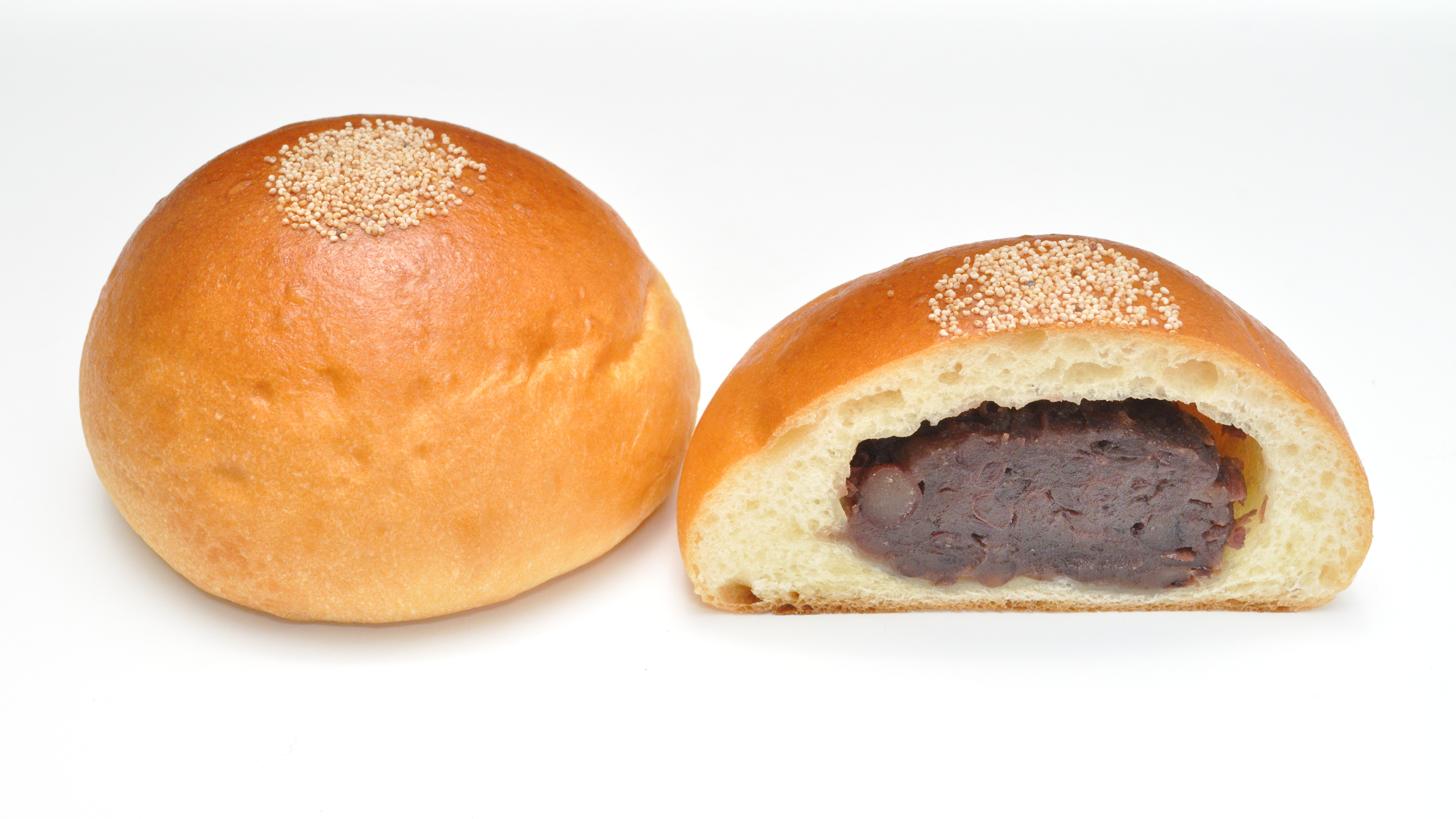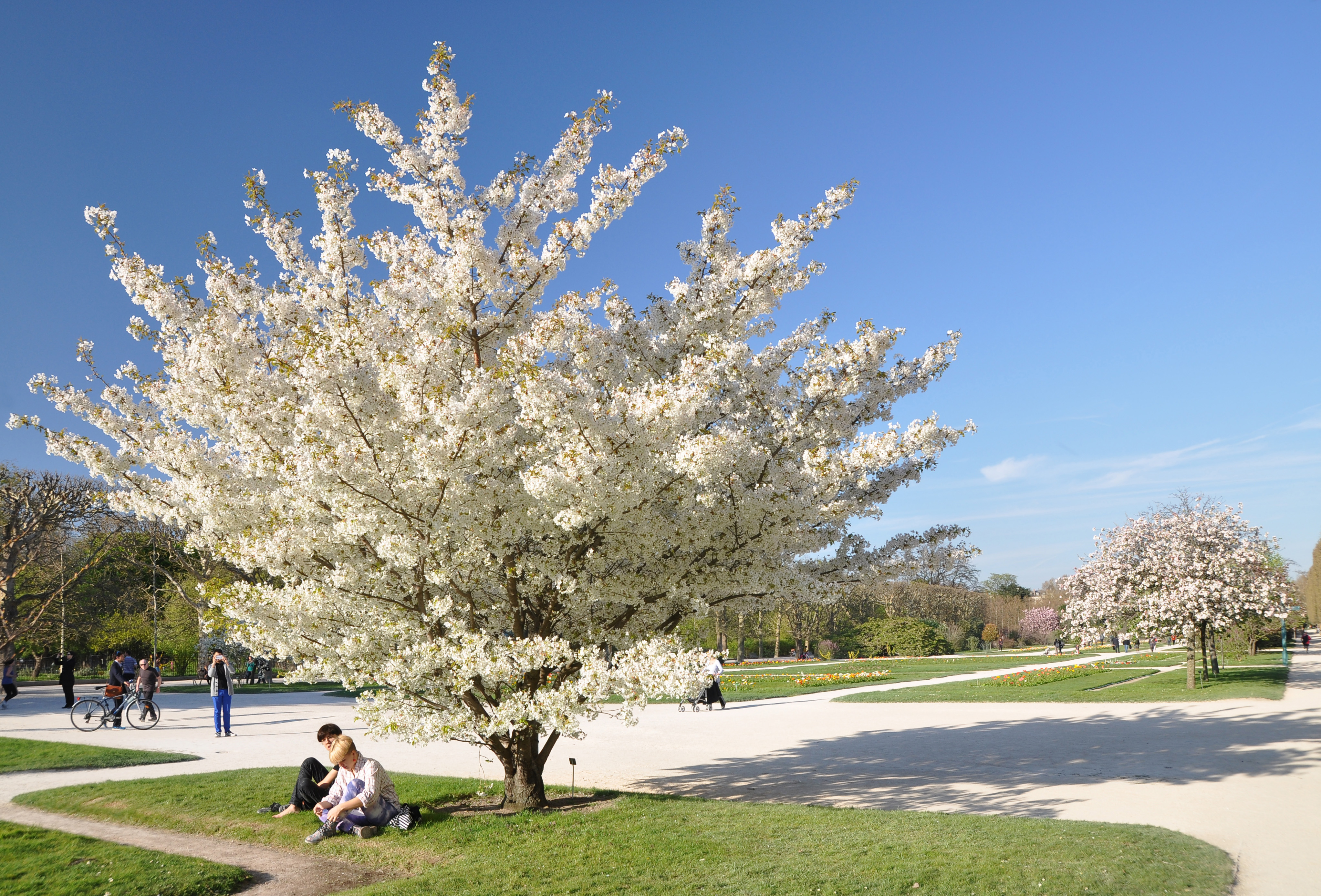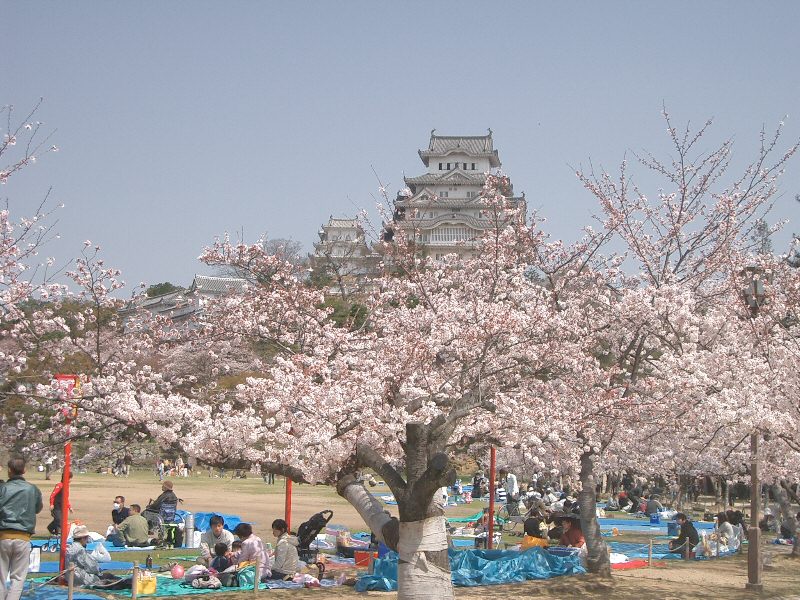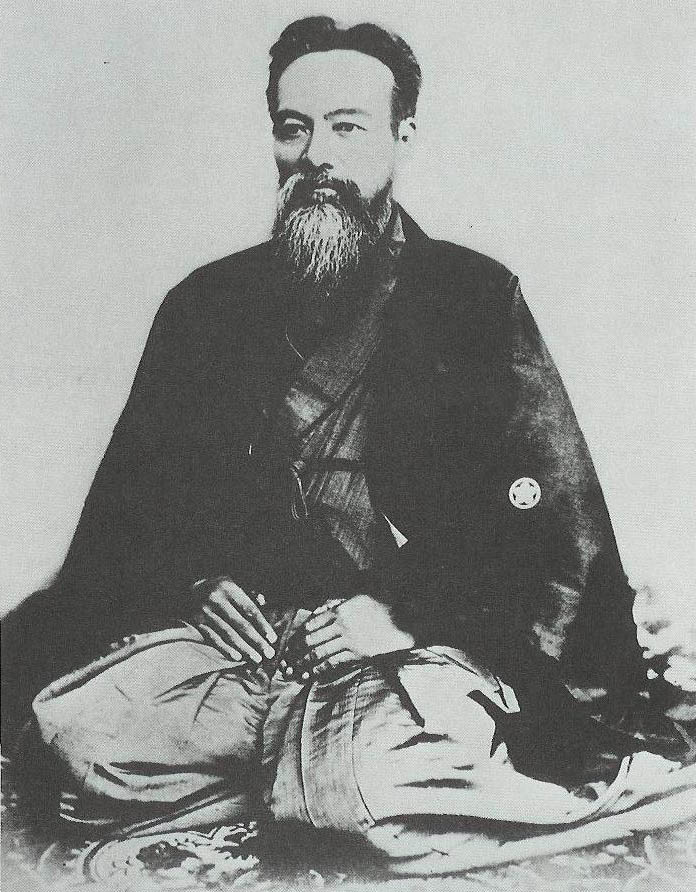|
Anpan
is a Japanese sweet roll most commonly filled with red bean paste. Anpan can also be prepared with other fillings, including white beans (''shiro-an''), green beans (''uguisu-an''), sesame (''goma-an''), and chestnuts (''kuri-an''). History Anpan was first made in 1875, during the Meiji period, by (木村安兵衛 ''Kimura Yasubei''), a samurai who lost his job with the rise of the Imperial Japanese Army and the dissolution of the samurai as a social class. The Meiji era was a period in which Japan was becoming increasingly modernized, and many samurai who lost their jobs were given work that was totally new to them. The role of a baker was one such job. One day, while wandering around the area where many employed in new jobs worked, Kimura found a young man making bread, and decided to start his own bakery, named Bun'eidō (文英堂). In 1874, he moved to Ginza and renamed the bakery Kimuraya (木村屋), now Kimuraya Sohonten ( :ja:木村屋總本店). At that time, ... [...More Info...] [...Related Items...] OR: [Wikipedia] [Google] [Baidu] |
Anpanman
is a Japanese children's superhero picture book series written by Takashi Yanase, running from 1973 until the author's death in 2013. The series has been adapted into an anime entitled , which is one of the most popular anime series among young children in Japan. The series follows the adventures of Anpanman, a superhero with an anpan (a red bean paste filled pastry) for a head, who protects the world from an evil anthropomorphic germ named Baikinman. Heavily merchandised, the ''Anpanman'' characters appear on virtually every imaginable children's product in Japan, ranging from clothes and video games to toys and snack foods. The series spawned a short-lived spin-off show featuring one of the popular recurring characters on the show, Omusubiman. Anpanman overtook Hello Kitty as Japan's top-grossing character in 2002, and has remained the country's top-grossing character . ''Anpanman'' has sold over 80million books as of February 2019, and the franchise generated in t ... [...More Info...] [...Related Items...] OR: [Wikipedia] [Google] [Baidu] |
Kimuraya
''Kimuraya Sohonten'' () is a bakery which was first established in 1869 as ''Bun'eidō'' (文英堂) by a former samurai, Yasubei Kimura. It was then renamed ''Kimuraya'' in 1870. Products Kimura invented the anpan is a Japanese sweet roll most commonly filled with red bean paste. Anpan can also be prepared with other fillings, including white beans (''shiro-an''), green beans (''uguisu-an''), sesame (''goma-an''), and chestnuts (''kuri-an''). History ... sweet bun in 1874 and this became popular with the Emperor and so sold well. The bakery makes about 130 unique products, with some only available on a seasonal basis. On February 1, 2024, Kimuraya's newest product went on sale on their online store and in Japan's Kanto area supermarkets. Kimuraya reportedly worked its magic with a Japanese electronics company; NEC Corp to make an AI Love Bread. NEC Corp utilized two AI technologies for the project: “NEC Enhanced Speech” for converting speech into text and � ... [...More Info...] [...Related Items...] OR: [Wikipedia] [Google] [Baidu] |
Cherry Blossom
The cherry blossom, or sakura, is the flower of trees in ''Prunus'' subgenus '' Cerasus''. ''Sakura'' usually refers to flowers of ornamental cherry trees, such as cultivars of ''Prunus serrulata'', not trees grown for their fruit (although these also have blossoms). Cherry blossoms have been described as having a vanilla-like smell, which is mainly attributed to coumarin. Wild species of cherry tree are widely distributed, mainly in the Northern Hemisphere. They are common in East Asia, especially in Japan, where they have been cultivated, producing many varieties. Most of the ornamental cherry trees planted in parks and other places for viewing are cultivars developed for ornamental purposes from various wild species. In order to create a cultivar suitable for viewing, a wild species with characteristics suitable for viewing is needed. ''Prunus speciosa'' (Oshima cherry), which is endemic to Japan, produces many large flowers, is fragrant, easily mutates into double flo ... [...More Info...] [...Related Items...] OR: [Wikipedia] [Google] [Baidu] |
Sesame
Sesame (; ''Sesamum indicum'') is a plant in the genus '' Sesamum'', also called benne. Numerous wild relatives occur in Africa and a smaller number in India. It is widely naturalized in tropical regions around the world and is cultivated for its edible seeds, which grow in pods. World production in 2018 was , with Sudan, Myanmar, and India as the largest producers. Sesame seed is one of the oldest oilseed crops known, domesticated well over 3,000 years ago. ''Sesamum'' has many other species, most being wild and native to sub-Saharan Africa. ''S. indicum,'' the cultivated type, originated in India. It tolerates drought conditions well, growing where other crops fail. Sesame has one of the highest oil contents of any seed. With a rich, nutty flavor, it is a common ingredient in cuisines around the world. Like other foods, it can trigger allergic reactions in some people and is one of the nine most common allergens outlined by the Food and Drug Administration. Etymology Th ... [...More Info...] [...Related Items...] OR: [Wikipedia] [Google] [Baidu] |
Japan
Japan is an island country in East Asia. Located in the Pacific Ocean off the northeast coast of the Asia, Asian mainland, it is bordered on the west by the Sea of Japan and extends from the Sea of Okhotsk in the north to the East China Sea in the south. The Japanese archipelago consists of four major islands—Hokkaido, Honshu, Shikoku, and Kyushu—and List of islands of Japan, thousands of smaller islands, covering . Japan has a population of over 123 million as of 2025, making it the List of countries and dependencies by population, eleventh-most populous country. The capital of Japan and List of cities in Japan, its largest city is Tokyo; the Greater Tokyo Area is the List of largest cities, largest metropolitan area in the world, with more than 37 million inhabitants as of 2024. Japan is divided into 47 Prefectures of Japan, administrative prefectures and List of regions of Japan, eight traditional regions. About three-quarters of Geography of Japan, the countr ... [...More Info...] [...Related Items...] OR: [Wikipedia] [Google] [Baidu] |
Anime
is a Traditional animation, hand-drawn and computer animation, computer-generated animation originating from Japan. Outside Japan and in English, ''anime'' refers specifically to animation produced in Japan. However, , in Japan and in Japanese, describes all animated works, regardless of style or origin. Many works of animation with a Anime-influenced animation, similar style to Japanese animation are also produced outside Japan. Video games sometimes also feature themes and art styles that are sometimes labelled as anime. The earliest commercial Japanese animation dates to 1917. A characteristic art style emerged in the 1960s with the works of cartoonist Osamu Tezuka and spread in the following decades, developing a large domestic audience. Anime is distributed theatrically, through television broadcasts, Original video animation, directly to home media, and Original net animation, over the Internet. In addition to original works, anime are often adaptations of Japanese ... [...More Info...] [...Related Items...] OR: [Wikipedia] [Google] [Baidu] |
Paint Thinner
Paint thinners are diluents — solvents used to adjust the viscosity of paint, as well as similar preparations such as varnish and lacquer, by dilution. For water-based paints, such as acrylic paints, water is the primary solvent, but notably, may not always be the only solvent as there may be low level usage of other solvents to assist in ensuring a consistent paint mixture. Organic solvents labelled "paint thinner" are usually turpentine or white spirits / mineral spirits for the use of diluting oil-based paints only. These organic solvents on traditional painting materials can have harmful effects on the environment in of themselves as well as through the release of hazard substances, including lead and other additives from dissolved paint stuffs. Uses Principally, paints are either a colloidal suspension of solid pigment particles or are an emulsion of dense viscous dye gel or paste with a filler all dispersed through a lighter free-flowing liquid medium — the solve ... [...More Info...] [...Related Items...] OR: [Wikipedia] [Google] [Baidu] |
Inhalant
Inhalants are a broad range of household and industrial chemicals whose volatile vapors or pressurized gases can be concentrated and breathed in via the nose or mouth to produce intoxication, in a manner not intended by the manufacturer. They are inhaled at room temperature through volatilization (in the case of gasoline or acetone) or from a pressurized container (e.g., nitrous oxide or butane), and do not include drugs that are sniffed after burning or heating. While a few inhalants are prescribed by medical professionals and used for medical purposes, as in the case of inhaled anesthetics and nitrous oxide (an anxiolytic and pain relief agent prescribed by dentists), this article focuses on inhalant use of household and industrial propellants, glues, fuels, and other products in a manner not intended by the manufacturer, to produce intoxication or other psychoactive effects. These products are used as recreational drugs for their intoxicating effect. According to a 1995 ... [...More Info...] [...Related Items...] OR: [Wikipedia] [Google] [Baidu] |
Hanami
is the Japanese traditional custom of enjoying the transient beauty of flowers; in this case almost always mean those of the or, less frequently, trees. From the end of March to early May, cherry trees bloom all over Japan, and around the second week of January on the island of Okinawa. The is announced each year by the Japan Meteorological Agency and watched carefully by those planning ''hanami,'' as the blossoms only last a week or two. In modern-day Japan, ''hanami'' mostly consists of having an outdoor party beneath the sakura during daytime or at night. In some contexts the Sino-Japanese term is used instead, particularly for festivals. ''Hanami'' at night is called . In many places such as Ueno Park temporary paper lanterns are hung for the purpose of ''yozakura''. On the island of Okinawa, decorative electric lanterns are hung in the trees for evening enjoyment, such as on the trees ascending Mt. Yae, near Motobu Town, or at the Nakijin Castle. A more ancient f ... [...More Info...] [...Related Items...] OR: [Wikipedia] [Google] [Baidu] |
Yamaoka Tesshū
, also known as Ono Tetsutarō or Yamaoka Tetsutarō, was a famous samurai of the Bakumatsu period, who played an important role in the Meiji Restoration. He is also noted as the founder of the '' Itto Shoden Muto-ryu'' school of swordsmanship. Along with Katsu Kaishū and Takahashi Deishū they were called “The Three Boats of the Bakumatsu (幕末の三舟)”. Early life Yamaoka was born in Edo (present-day Tokyo) as Ono Tetsutaro, where his father was a retainer of the Tokugawa shogunate and his mother was the daughter of a Shinto priest from Kashima Shrine. Yamaoka practiced swordsmanship from the age of nine, starting in the '' Jikishinkage-ryū'' tradition. After that he learned ''Hokushin Ittō-ryū'' from Inoue Hachirō, who was asked by Yamaoka Tesshū's father to teach his son. Later his family moved to Takayama where he began the '' Nakanishi-ha Ittō-ryū'' style of fencing. When he was seventeen, he returned to Edo and joined the government's ''Kobukan'' Milit ... [...More Info...] [...Related Items...] OR: [Wikipedia] [Google] [Baidu] |
Empress Shōken
, who adopted the imperial given name in 1867 and was posthumously honoured as , was the wife of Emperor Meiji of Japan. She was one of the founders of the Japanese Red Cross Society, whose charity work was known throughout the First Sino-Japanese War. Early life Masako Ichijō was born on 9 May 1849, in Heian-kyō, Japan. She was the third daughter of Tadayoshi Ichijō, former Minister of the Left and head of the Fujiwara clan's Ichijō branch. Her adoptive mother was one of Prince Fushimi Kuniie's daughters, but her biological mother was Tamiko Niihata, the daughter of a doctor from the Ichijō family. Unusual for the time, she had been vaccinated against smallpox. As a child, Masako was somewhat of a prodigy: she was able to read poetry from the ''Kokin Wakashū'' by the age of 4 and had composed some '' waka'' verses of her own by the age of 5. By age seven, she was able to read some texts in classical Chinese with some assistance and was studying Japanese calligraphy. B ... [...More Info...] [...Related Items...] OR: [Wikipedia] [Google] [Baidu] |
Emperor Meiji
, posthumously honored as , was the 122nd emperor of Japan according to the List of emperors of Japan, traditional order of succession, reigning from 1867 until his death in 1912. His reign is associated with the Meiji Restoration of 1868, which ended the Tokugawa shogunate and began rapid changes that transformed Japan from an isolationist, feudal state to an industrialized great power, world power. Emperor Meiji was the first monarch of the Empire of Japan, and presided over the Meiji era. At the time of Mutsuhito's birth, Japan was a feudal and pre-industrial country dominated by the isolationist Tokugawa shogunate and the ''daimyō'' subject to it, who ruled over Japan's 270 decentralized han (Japan), domains. The opening of Japan to the West from 1854 fueled domestic demands for modernization, and when Mutsuhito became emperor after the death of his father Emperor Kōmei in 1867, it triggered the Boshin War, in which samurai (mostly from the Chōshū Domain, Chōshū and Sa ... [...More Info...] [...Related Items...] OR: [Wikipedia] [Google] [Baidu] |







